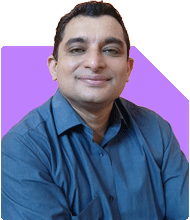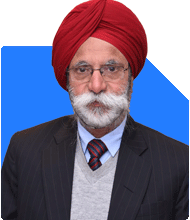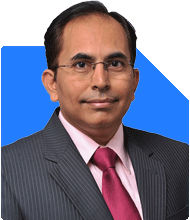Hi, my age is 35 and currently i am investing 50000 in following four funds. 1. Uti nifty 50 index ->15k 2.parag parikh flexi->15k. 3. Tata small cap->10k. 4. Kotak Opportunities large & midcap fund-->10k. Any suggestions on diversification or allocation? Also can you please suggest if i need to add multi cap , mid cap or any internation mf?
Ans: It’s fantastic that you’re proactively investing and seeking advice on your portfolio. At 35, you’re in a great position to build wealth for the future. Your current investment of Rs 50,000 per month across four mutual funds shows a good start, but there’s room for fine-tuning. Let’s explore your portfolio, discuss diversification, and consider adding other funds to achieve your financial goals.
Evaluating Your Current Portfolio
Let’s first assess the funds you’re currently investing in:
UTI Nifty 50 Index Fund (Rs 15,000)
Nature: This is an index fund that replicates the Nifty 50 index.
Advantages: Offers low-cost exposure to the top 50 companies in India.
Disadvantages: Limited to market returns, lacks flexibility in management.
Parag Parikh Flexi Cap Fund (Rs 15,000)
Nature: This is a flexi-cap fund, investing across market capitalizations and geographies.
Advantages: Provides diversified exposure, including international stocks.
Disadvantages: Can be volatile due to exposure to multiple markets.
Tata Small Cap Fund (Rs 10,000)
Nature: Focuses on small-cap companies with high growth potential.
Advantages: Can provide high returns in the long term.
Disadvantages: Higher risk and volatility compared to large-cap or diversified funds.
Kotak Opportunities Large & Mid Cap Fund (Rs 10,000)
Nature: Invests in both large-cap and mid-cap stocks, aiming for growth.
Advantages: Balances growth potential with stability.
Disadvantages: Mid-caps can add to volatility, though less than small-caps.
Assessing Your Portfolio’s Diversification
Diversification is key to managing risk and achieving balanced growth. Let’s evaluate how diversified your portfolio is:
Equity Exposure: Your current investments are all in equity funds, which is good for growth but can be volatile.
Market Capitalization: You have exposure to large-cap (index and opportunities fund), mid-cap (opportunities fund), and small-cap (Tata Small Cap). This is a good spread across different market capitalizations.
Geographical Diversification: The Parag Parikh Flexi Cap Fund provides some international exposure, which is beneficial for risk management and tapping into global growth.
Suggestions for Improved Diversification
To further enhance your portfolio, consider these suggestions:
1. Increase Diversification with Multi-Cap Funds
Multi-cap funds invest across large, mid, and small-cap stocks. They offer flexibility and balanced exposure to all market segments.
Why Add Multi-Cap Funds? They adapt to market conditions and offer a mix of stability and growth.
Allocation Suggestion: Consider allocating part of your investments to a multi-cap fund to enhance diversification.
Potential Change: You could redirect some of your investment from the UTI Nifty 50 Index Fund to a multi-cap fund. This way, you get managed exposure across various market caps.
2. Consider Adding a Mid-Cap Fund
Mid-cap funds invest in companies that are between large-cap and small-cap in terms of market size.
Why Add Mid-Cap Funds? They offer higher growth potential than large-caps with less risk than small-caps.
Allocation Suggestion: Adding a mid-cap fund could balance the high-risk, high-reward nature of small-cap funds with the stability of large-caps.
Potential Change: You might allocate Rs 10,000 from your current investments to a dedicated mid-cap fund. This complements your large-cap and small-cap exposure.
3. Review the Need for an International Fund
While Parag Parikh Flexi Cap provides some international exposure, a dedicated international fund could give more focused global diversification.
Why Add an International Fund? It provides direct exposure to global markets and currencies, diversifying risks associated with the Indian market.
Allocation Suggestion: Consider a small portion, like Rs 5,000, into a dedicated international fund for greater global exposure.
Potential Change: You could adjust your investment in the Parag Parikh Flexi Cap Fund and add a small allocation to a dedicated international equity fund.
4. Reduce Concentration in Index Funds
Index funds like the UTI Nifty 50 track market indices. While they are stable, they only match market returns and lack active management benefits.
Why Reduce Index Fund Allocation? Actively managed funds can outperform and adjust to market conditions.
Allocation Suggestion: Decrease investment in the UTI Nifty 50 Index Fund and redistribute to more actively managed funds.
Potential Change: Shift part of the Rs 15,000 from the UTI Nifty 50 to funds with active management and growth potential, like multi-cap or mid-cap funds.
Risk Management and Stability
Ensuring your portfolio aligns with your risk tolerance and financial goals is crucial. Here’s how you can manage risks effectively:
1. Balance Growth with Stability
Your portfolio should aim for growth but also maintain some stability to buffer against market volatility.
Growth Funds: Focus on funds that offer high growth potential like small-cap and mid-cap funds.
Stable Funds: Include funds that provide stability, such as large-cap funds or balanced funds.
Why This Balance Matters: It helps in achieving high returns while protecting against significant losses.
2. Monitor and Rebalance Regularly
Regular monitoring and rebalancing of your portfolio are essential to stay on track.
Why Monitor? Ensure that your investments align with your goals and risk tolerance.
When to Rebalance? Adjust your portfolio annually or when there are significant market changes.
How This Helps: It keeps your portfolio aligned with your financial goals and market conditions.
Managing SIPs and Lump Sum Investments
Since you are committing to regular SIPs, let’s ensure they align well with your strategy and goals.
1. Continue with SIPs for Consistency
SIPs offer a disciplined approach to investing, helping to average out costs over time.
Why Continue SIPs? They build wealth steadily and manage market volatility through regular investments.
Monthly Commitment: Your Rs 50,000 monthly SIP is a strong foundation for long-term growth.
Benefits: SIPs help in mitigating the impact of market volatility and averaging out the purchase cost of mutual fund units.
2. Consider Lump Sum Investments During Market Corrections
Lump sum investments during market dips can be advantageous.
Why Lump Sum During Dips? Markets offer buying opportunities at lower prices during corrections.
How to Implement: Keep some funds aside to invest during significant market downturns.
Why This Strategy Works: It allows you to take advantage of lower market valuations, potentially boosting returns.
Aligning with Financial Goals
Your investments should align with both your long-term and short-term financial goals.
1. Define Your Financial Goals
Clearly define your short-term and long-term financial objectives.
Short-Term Goals: Emergencies, travel, or large purchases in the next 2-5 years.
Long-Term Goals: Retirement, children’s education, or wealth building over 10-20 years.
Why Goal Definition is Key: It helps in choosing the right funds and setting the appropriate investment horizon.
2. Match Funds with Goals
Choose funds that align with your risk tolerance and investment horizon for each goal.
Short-Term Investments: Consider debt or balanced funds for short-term goals to reduce risk.
Long-Term Investments: Continue with equity funds for long-term goals for higher growth potential.
Why This Alignment Matters: Different goals require different investment strategies to manage risk and returns effectively.
Final Insights
You’re on a commendable journey towards building wealth with a well-thought-out SIP strategy. Here’s a quick summary and additional insights to fine-tune your portfolio:
Diversification is Crucial: Ensure your investments spread across different types of funds for balanced growth and risk management.
Consider Adding Multi-Cap and Mid-Cap Funds: These funds offer flexibility and growth potential, balancing your current portfolio.
International Exposure: Increase your global market exposure with a dedicated international fund for added diversification.
Rebalance Regularly: Keep an eye on your portfolio’s performance and rebalance annually to stay aligned with your goals.
Maintain SIPs and Use Lump Sums Wisely: Continue with your SIPs for disciplined investing and consider lump sums during market corrections.
Align with Financial Goals: Match your investments with your specific financial goals to manage risk and optimize returns.
Investing is a journey that requires patience, discipline, and a strategy tailored to your unique needs and goals. Keep up the great work, and you’re sure to achieve your financial aspirations.
Best Regards,
K. Ramalingam, MBA, CFP,
Chief Financial Planner,
www.holisticinvestment.in






























